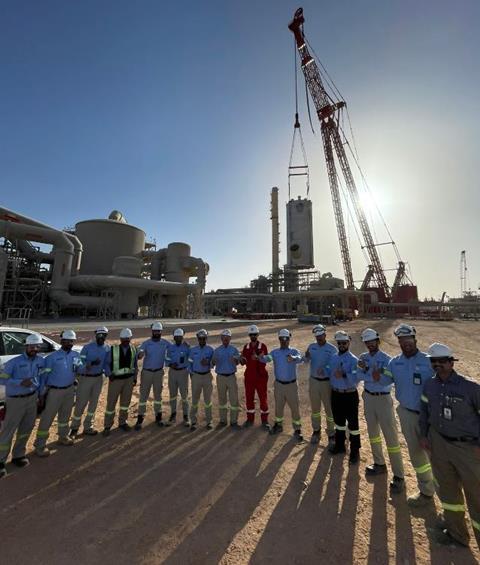Mammoet has replaced nine process towers as part of a facility upgrade for Ma’aden Wa’ad Al Shamal Phosphate Company’s (MWSPC) Umm Wu’al sulphuric acid and power plant in Saudi Arabia.
Keeping downtime at the plant to a minimum was a key objective for the client. However, as the towers had been stick-built, a conventional approach of dismantling them piece-by-piece would take several months for each train.
Fluor, the project consultant, asked Mammoet to lift out the old towers in one piece – a complex challenge given that the structures had not been designed to be handled in that way – and then manoeuvre the modular replacements into position.
It prepared detailed 3D engineering models of each tower, which were supplemented by a series of ultrasonic tests to reveal their true structure and strength. A finite element (FE) simulation showed how they would respond to the pressure of being hoisted out of the plant. A series of frames and slings were then designed to safely cradle the towers throughout the move.
Mammoet utilised a Terex-Demag 1,600-tonne lift capacity CC800-1 crawler crane, a 1,250-tonne CC6800 crawler, and its 3,200-tonne MSG-80 ring crane. This combination, Mammoet said, meant its team could reach far above the tight confines of the site, extract all nine of the towers, move them to a central staging area, and hoist the replacements into position.

Abdullah Terkaoui, project manager for Mammoet, explained: “Our methodology enabled our customers to reduce the planned shutdown schedule for each train from 120 days to 45 days. Then, as the operation progressed, further time savings were realised: the complete shutdown of the first train was completed in 30 days; the second shutdown, where the lifts took only seven days, enabling completion in 22 days; and, for the third, the lift took just three days, with a total mechanical completion in 19 days.
“This meant that, thanks to the entire project team and everyone involved, all three shutdowns were completed two months (64 days) ahead of the original schedule – representing a time saving of over 50 percent.”
















